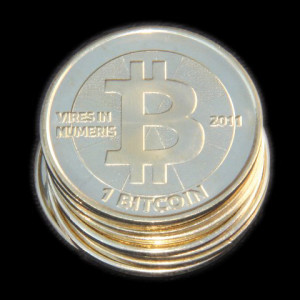Contra Robert Shiller on Cryptocurrencies – Article by Adam Alonzi
While warnings of caution can be condoned without much guilt, my concern is critiques like Dr. Shiller’s (which he has since considerably softened) will cause some value-oriented investors to completely exclude cryptocurrencies and related assets from their portfolios. I will not wax poetically about the myriad of forms money has assumed across the ages, because it is already well-covered by more than one rarely read treatise. It should be said, though it may not need to be, that a community’s preferred medium of exchange is not arbitrary. The immovable wheels of Micronesia met the needs of their makers just as digital stores of value like Bitcoin will serve the sprawling financial archipelagos of tomorrow. This role will be facilitated by the ability of blockchains not just to store transactions, but to enforce the governing charter agreed upon by their participants.
Tokens are abstractions, a convenient means of allotting ownership. Bradley Rivetz, a venture capitalist, puts it like this: “everything that can be tokenized will be tokenized the Empire State Building will someday be tokenized, I’ll buy 1% of the Empire State Building, I’ll get every day credited to my wallet 1% of the rents minus expenses, I can borrow against my Empire State Building holding and if I want to sell the Empire State Building I hit a button and I instantly have the money.” Bitcoin and its unmodified copycats do not derive their value from anything tangible. However, this is not the case for all crypto projects. Supporters tout its deflationary design (which isn’t much of an advantage when there is no value to deflate), its modest transaction fees, the fact it is not treated as a currency by most tax codes (this is changing and liable to continue changing), and the relative anonymity it offers.
The fact that Bitcoin is still considered an asset in most jurisdictions is a strength. This means that since Bitcoin is de facto intermediary on most exchanges (most pairs are expressed in terms of BTC or a major fiat, many solely in BTC), one can buy and sell other tokens freely without worrying about capital gains taxes, which turn what should be wholly pleasurable into something akin to an ice cream sundae followed by a root canal. This applies to sales and corporate income taxes as well. A company like Walmart, despite its gross income, relies on a slender profit margin to appease its shareholders. While I’m not asking you to weep for the Waltons, I am asking you to think about the incentives for a company to begin experimenting with its own tax-free tokens as a means of improving customer spending power and building brand loyalty.
How many coins will be needed and, for that matter, how many niches they will be summoned to fill, remains unknown. In his lecture on real estate Dr. Shiller mentions the Peruvian economist Hernando De Soto’s observation about the lack of accounting for most of the land in the world. Needless to say, for these areas to advance economically, or any way for that matter, it is important to establish who owns what. Drafting deeds, transferring ownership of properties or other goods, and managing the laws of districts where local authorities are unreliable or otherwise impotent are services that are best provided by an inviolable ledger. In the absence of a central body, this responsibility will be assumed by blockchain. Projects like BitNation are bringing the idea of decentralized governance to the masses; efforts like Octaneum are beginning to integrate blockchain technology with multi-trillion dollar commodities markets.
As more than one author has contended, information is arguably the most precious resource of the twenty first century. It it is hardly scarce, but analysis is as vital to making sound decisions. Augur and Gnosis provide decentralized prediction markets. The latter, Kristin Houser describes it, is a platform used “to create a prediction market for any event, such as the Super Bowl or an art auction.” Philip Tetlock’s book on superforecasting covers the key advantages of crowdsourcing economic and geopolitical forecasting, namely accuracy and cost-effectiveness. Blockchains will not only generate data, but also assist in making sense of it. While it is just a historical aside, it is good to remember that money, as Tymoigne and Wray (2006) note, was originally devised as a means of recording debt. Hazel sticks with notches preceded the first coins by hundreds of years. Money began as a unit of accounting, not a store of value.
MelonPort and Iconomi both allow anyone to start their own investment funds. Given that it is “just” software is the beauty of it: these programs can continue to be improved upon indefinitely. If the old team loses its vim, the project can easily be forked. Where is crypto right now and why does it matter? There is a tendency for academics (and ordinary people) to think of things in the real world as static objects existing in some kind of Platonic heaven. This is a monumental mistake when dealing with an adaptive system, or in this case, a series of immature, interlocking, and rapidly evolving ecosystems. We have seen the first bloom – some pruning too – and as clever people find new uses for the underlying technology, particularly in the area of IoT and other emerging fields, we will see another bloom. The crypto bubble has come and gone, but the tsunami, replete with mature products with explicit functions, is just starting to take shape.
In the long run Warren Buffett, Shiller, and the rest will likely be right about Bitcoin itself, which has far fewer features than more recent arrivals. Its persisting relevance comes from brand recognition and the fact that most of the crypto infrastructure was built with it in mind. As the first comer it will remain the reserve currency of the crypto world. It is nowhere near reaching any sort of hard cap. The total amount invested in crypto is still minuscule compared to older markets. Newcomers, unaware or wary of even well-established projects like Ethereum and Litecoin, will at first invest in what they recognize. Given that the barriers to entry (access to an Internet connection and a halfway-decent computer or phone) are set to continue diminishing, including in countries in which the fiat currency is unstable, demand should only be expected to climb.
Adam Alonzi is a writer, biotechnologist, documentary maker, futurist, inventor, programmer, and author of the novels A Plank in Reason and Praying for Death: A Zombie Apocalypse. He is an analyst for the Millennium Project, the Head Media Director for BioViva Sciences, and Editor-in-Chief of Radical Science News. Listen to his podcasts here. Read his blog here.





